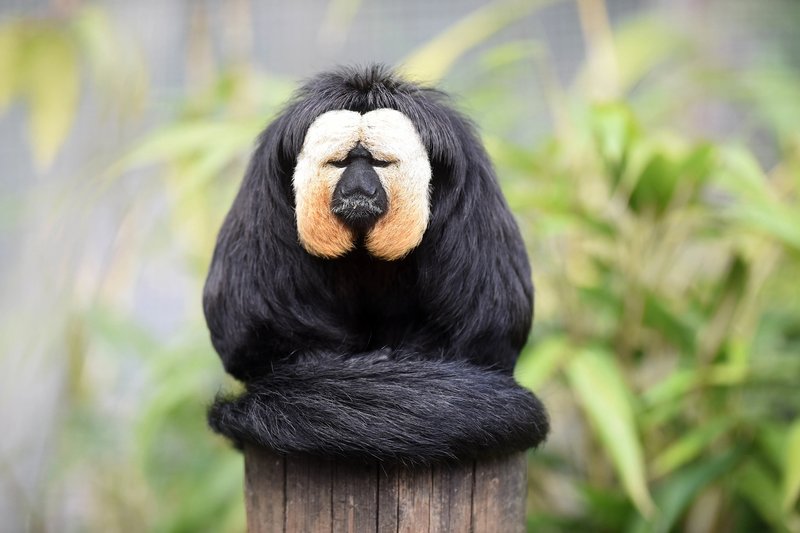
Imagine sipping a cup of coffee while hearing tales of this fascinating creature. Just like how children might imagine a friendly spirit living in the woods, different cultures view the Saki monkey through unique lenses. In Brazil’s lush rainforests, the Saki’s quirky antics capture the imagination, while in other parts of the world, it stands as a symbol of cleverness and adaptability. So, what else makes this little monkey so special in cultural narratives? Let’s jump into the stories and meanings behind the Saki monkey.
Cultural Symbolism of the Saki Monkey
The Saki monkey holds a variety of meanings across different cultures. In some regions, it represents wisdom and intelligence. This often comes from observing how Saki monkeys interact with their environment. Their ability to navigate the treetops and communicate through a series of vocalizations inspires admiration.
In Brazilian folklore, for instance, the Saki monkey sometimes embodies the spirit of the forest. This aligns with a broader theme in many cultures, where certain animals act as guides or protectors. Here, the Saki monkey teaches us to value our ecosystem and embrace the wisdom of nature.
You might be wondering how this translates into stories. Well, in many Indigenous tales, the Saki serves as a bridge between humans and nature, reminding us of our interconnectedness with every living being.
Folklore Tales Featuring the Saki Monkey
When it comes to folklore, the Saki monkey is often seen as a mischievous character. Picture a story where the Saki tricks other animals or even humans. This playful nature serves to entertain while teaching valuable lessons about humility and cleverness.
For instance, one popular tale tells of a Saki monkey who outsmarts a boastful jaguar. The jaguar, confident in his strength, underestimates the cunning of the Saki. As the story unfolds, we see how the Saki uses quick thinking to escape danger, ultimately leading the jaguar to rethink his arrogant ways.
These stories highlight the importance of wit over brute strength, a recurring theme in many folklore narratives worldwide. The Saki monkey becomes a symbol not just of cleverness but also of the power of storytelling itself.
The Saki Monkey in Art and Literature
Art and literature often mirror the cultures that create them, and the Saki monkey is a spirited muse for many artists and writers. In Brazilian art, for example, you might find vibrant paintings showcasing the Saki, capturing its lively personality and distinct features.
Literature, too, has not shied away from embracing this creature. In various children’s books, the Saki appears as a friendly character, often teaching young readers about the importance of friendship and teamwork. This outreach helps introduce the essence of wildlife conservation and respect for nature, which is crucial in today’s world where many species are at risk.
Moreover, the Saki monkey has also made appearances in fables and parables, where it often plays a role in teaching moral lessons. By incorporating the Saki into these narratives, authors and artists tap into its rich cultural symbolism, helping audiences connect deeper with the themes of the stories.
The Role of the Saki Monkey in Environmental Awareness
In recent years, the Saki monkey has become more than just a figure of folklore; it represents a powerful symbol for environmental awareness. As more people become concerned about deforestation and habitat loss, the Saki’s lively antics remind us of what we stand to lose if we don’t act.
Organizations and conservationists often use the Saki monkey in their campaigns to highlight the importance of preserving the Amazon rainforest. By showcasing this charming creature, they aim to capture people’s hearts, emphasizing that protecting its habitat is vital not just for the Saki, but for countless other species as well.
By doing so, these campaigns help bring the stories of the Saki monkey into a contemporary context, bridging the gap between folklore and real-world issues. It’s heartening to see how a character from tales can inspire real change and deepen our understanding of ecology.
As we’ve explored, the Saki monkey is more than just an intriguing animal; it’s a vibrant part of many cultures and a symbol of connection to the natural world. From folklore to art and environmental advocacy, the Saki embodies cleverness, playfulness, and wisdom. Its representation in various cultures highlights our shared values, encouraging us to cherish both wildlife and storytelling.
The stories, art, and awareness campaigns surrounding the Saki monkey not only make it a fascinating subject but also a reminder of our responsibility toward nature. So, the next time you hear about this engaging creature, think about the rich tapestry of culture and folklore woven around its tiny, expressive face. It’s a reminder that every animal has its tale, and every tale helps us understand our world just a little better.

